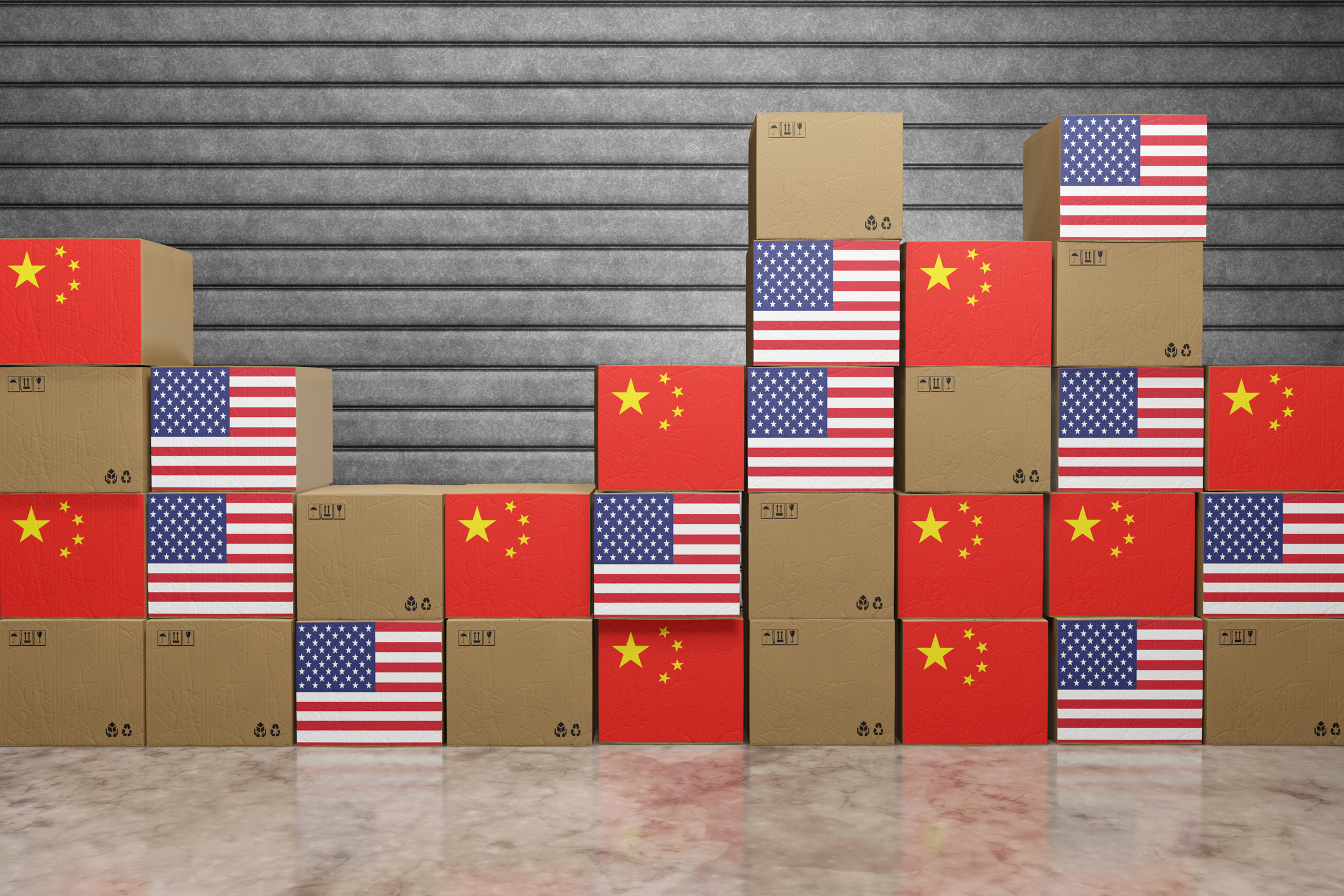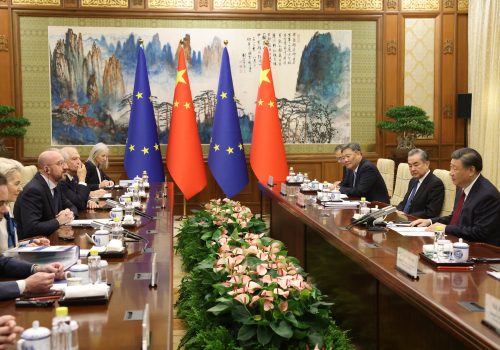Discover Pandipedia
Pandipedia is the world's first encyclopaedia of machine generated content approved by humans. You can contribute by simply searching and clicking/tapping on "Add To Pandipedia" in the answer you like. Learn More
Expand the world's knowledge as you search and help others. Go you!

A bubble curtain is a system that produces bubbles in a deliberate arrangement in water, commonly referred to as a pneumatic barrier. The technique involves releasing bubbles of air under the water surface, which rise to create a barrier that can break the propagation of waves or the spreading of particles and contaminants. It is used for several purposes, including reducing shock wave propagation, controlling the movements of fish, and providing decoration and airing in aquariums[1].
Let's look at alternatives:
- Modify the query.
- Start a new thread.
- Remove sources (if manually added).
- Request a manual search from our human research team.
/cdn.vox-cdn.com/uploads/chorus_asset/file/23951350/STK043_VRG_Illo_N_Barclay_6_Meta.jpg)
Meta is reportedly developing its own AI-powered search engine to reduce its dependence on Google and Microsoft Bing, which currently provide data for its AI chatbot used across platforms like Facebook and Instagram. This initiative aims to offer AI-generated summaries of current events and enable more conversational responses without relying on external search platforms[1][2][3].
The development team has been working on this project for about eight months, focusing on web-crawling technologies to build a comprehensive information database. This move reflects CEO Mark Zuckerberg's desire for Meta to operate independently from competitors, addressing concerns about past reliance on other tech giants[4][5].
Let's look at alternatives:
- Modify the query.
- Start a new thread.
- Remove sources (if manually added).
- Request a manual search from our human research team.
Get more accurate answers with Super Search, upload files, personalised discovery feed, save searches and contribute to the PandiPedia.

These products are designed just like our general search ad products to help our advertising partners connect with consumers.
Mr. Holden[3]
Advertisers believe some form of intent has been expressed by the user through the entry of a query.
Mr. Holden[3]

Google intentionally chooses more revenue over improving quality in search ads.
MR. DAHLQUIST[1]
Google has used price increases and other levers to manipulate the ad auction.
MR. DAHLQUIST[1]
Each channel except for Google brand is above ROAS target. Our optimization focus is there this week.
Dr. Israel[2]
Let's look at alternatives:
- Modify the query.
- Start a new thread.
- Remove sources (if manually added).
- Request a manual search from our human research team.
AI Agents Transforming Web Browsing

Artificial Intelligence (AI) agents are changing online experiences, as they offer more intuitive and efficient web browsing[1]. These AI tools automate tasks like web browsing and data extraction, making these processes more accessible[5]. Companies that implement AI automation see significant productivity gains, ranging from 40-60% in knowledge-work tasks[6]. Browser-based AI agents lead this revolution by turning web chaos into organized efficiency[6]. The AI agent market is projected to grow significantly, with a CAGR of 38% through 2028[6].
Functionality and Examples of AI Agents

AI agents can perform various tasks, including booking flights, securing concert tickets, comparing product prices, and extracting information from websites[2]. For example, Amazon's Nova Act can autonomously search for products, compare prices, and complete purchases, reducing the need for manual input[1]. Microsoft's Copilot Actions can book reservations, buy tickets, and arrange travel plans through chat prompts[1]. Google's Gemini 2.0 focuses on autonomous agents capable of solving multi-step problems, compiling information into reports, and improving AI Overviews in Google Search[1]. Opera's AI Agent Browser allows the browser to actively participate in user interactions, thus enabling more efficient and intuitive browsing[1].
Key AI Agents in the Market

Several AI agents are making their mark in 2024[6]:
- Perplexity AI: Combines ChatGPT's intelligence with Google's reach for deep research tasks[6].
- ChatGPT Search: A research assistant powered by GPT-4o[6].
- Brave Search: A privacy-focused search engine with AI capabilities[6].
- Arc Search: Offers a 'Browse for Me' feature that provides custom reports[6].
- Microsoft Bing with AI: Balances traditional search with AI capabilities[6].
- AgentGPT: Allows users to create autonomous agents for specific tasks[6].
- Superagent: An open-source tool for content generation and research automation[6].
- Aomni: Focuses on B2B sales, gathering market intelligence and sales insights[6].
- Tusk: Streamlines developer workflows by turning bug tickets into pull requests[6].
- GPT-4o: OpenAI's powerhouse that powers many of these solutions[6].
Browser Use: A Framework for Building AI Agents
The Browser Use framework acts as a bridge between LLMs and web browsers, where the LLM provides reasoning and decision-making while Browser Use provides the tools to interact with websites[2]. Browser Use can control a browser on the user's actual computer, meaning if the user is already logged into Amazon, Gmail, or a flight booking site, the AI agent can pick up where the user left off[2]. It is LLM agnostic, working with models like OpenAI’s GPT-4, Anthropic’s Claude, and local models via Ollama[2]. The core framework is free and open source[2]. It allows the LLM to “see” the page and decide on the next best action and can handle multiple tabs, go back and forth, and intelligently interact with web elements[2].
UI-TARS: A Multimodal Agent for GUI Interaction

UI-TARS is a multimodal agent built upon a vision-language model[3]. It is capable of performing tasks within virtual worlds[3]. UI-TARS-1.5 integrates advanced reasoning enabled by reinforcement learning, allowing the model to reason through its thoughts before taking action[3]. It achieves state-of-the-art results across standard benchmarks, demonstrating strong reasoning capabilities and improvements over prior models[3]. UI-TARS can click, type, scroll, long press, open apps, and navigate back or home[4]. It is trained with Supervised Fine-Tuning (SFT) and Direct Preference Optimization (DPO)[4]. The model comes in three sizes[4].
Technical Aspects of UI-TARS
UI-TARS, a native GUI agent model, perceives screenshots as input and performs human-like interactions[9]. Unlike agent frameworks that depend on commercial models with expert-crafted prompts, UI-TARS is an end-to-end model[9]. It achieves SOTA performance in 10+ GUI agent benchmarks by leveraging enhanced GUI perception, unified action modeling, System-2 Reasoning, and iterative training with reflective online traces[9]. The UI-TARS model is open-sourced[3][9]. ByteDance also offers a UI-TARS-desktop version[3].
Challenges and Responsible Use
The advancements in AI agents also come with challenges[1]:
- Data Privacy: The increased autonomy of AI agents requires robust data protection measures[1].
- User Trust: Ensuring transparency in AI operations is crucial for building user trust[1].
- Adaptation: Users and developers must adapt to AI-driven web interactions, which may require new skills[1].
It's important to use tools like Browser Use responsibly, respecting website terms of service and being mindful of security implications, especially when AI has control over logged-in sessions[2]. Furthermore, the potential misuse of UI-TARS-1.5 for unauthorized access is recognized, necessitating extensive internal safety evaluations[3].
Evaluation Metrics for AI Agents

Evaluating browser agents is essential to ensure reliability, safety, and user trust[7]. Key benchmarks and metrics include standardized benchmarks for performance comparison and evaluations for safe and compliant browsing behaviors[7]. Metrics should be clearly defined for each task, and existing frameworks like Foundry, BrowserGym, LangChain's LangSmith, and OpenAI Evals should be leveraged[7]. BrowseComp is a benchmark for measuring the ability of agents to browse the web[8]. It comprises questions that require navigating the internet in search of information[8]. Doing well on BrowseComp requires reasoning about factuality, navigating the internet persistently, and searching creatively to find answers[8].
Let's look at alternatives:
- Modify the query.
- Start a new thread.
- Remove sources (if manually added).
- Request a manual search from our human research team.

Jellycat plush toys have captured the hearts of both children and adults with their unique designs and irresistibly soft textures. As the popularity of these cuddly companions continues to grow, particularly among collectors and on social media platforms like TikTok, several standout models have emerged as favorites. Here's a closer look at some of the most adorable Jellycat stuffed animals that are must-haves in any plush collection.
The Bashful Bunny Collection

Among the flock of Jellycat offerings, the Bashful Bunny is undoubtedly the star. This plush boasts an incredibly soft texture and comes in various sizes, making it a perfect gift for newborns. Parents often rave about its comforting presence, with many choosing to buy multiple versions to account for the potential loss of a beloved plush. The Bashful Bunny is known for its squishy body and gentle expression, creating a sense of reassurance for children, which is why it’s a staple in nurseries and bedrooms alike[3][7].
Fuddlewuddle Friends
:max_bytes(150000):strip_icc():focal(749x0:751x2):format(webp)/jellycat-fossilly-t-rex-dinosaur-stuffedjellycat-fossilly-t-rex-dinosaur-stuffed-a8c81be480b149d8aac6fb494fbb1534.jpg)
If you’re seeking a blend of sweetness and cuddliness, the Fuddlewuddle series should be on your radar. The Fuddlewuddle Lion, for example, is described as 'totally roarsome,' featuring a fluffy mane and a friendly, sitting pose that ensures it stands out on any shelf or bedside table. Its playful yet gentle demeanor captures the attention of children, making it a delightful companion for playtime and bedtime[7].
In the Fuddlewuddle collection, the Fuddlewuddle Dino also shines brightly. This adorable green dinosaur is perfect for young children and features a design that adds a whimsical touch to a child’s sleeping space. With weighted paws and a charming look, it promises to be a bedtime buddy for years to come[7][8].
Amuseables for the Quirky Collector

For those who enjoy a more unique aesthetic, the Amuseables series offers plushies that double as fun home décor. Each character, such as the Amuseable Cloud and Amuseable Rainbow, features a quirky design that makes them ideal for brightening up any room. The Amuseable Cloud, with its cute smile and dangling legs, can instantly lighten the mood of a nursery, while the Amuseable Rainbow adds a touch of color and whimsy[4][7].
Special Editions and Seasonal Toys
:max_bytes(150000):strip_icc():focal(749x0:751x2):format(webp)/jellycat-bumbly-bear-stuffed-animal-46a976e31e21466a8397758cc039843f.jpg)
Jellycat regularly introduces special editions and seasonal toys that become instant hits. For those looking for a fun, festive option, the Jellycat Eggsquisite Egg, perfect for Easter celebrations, presents a delightful alternative to traditional chocolate treats. Additionally, Halloween-themed toys like the Halloween Amuseable Pumpkin offer a charmingly spooky touch for the fall season[7][8].
Unique and Novel Designs
:max_bytes(150000):strip_icc():focal(749x0:751x2):format(webp)/jellycat-bashful-monkey-stuffed-animal-small-7-inches-403efb6ff74b4ecf87fff8dcc9f767d4.jpg)
One of Jellycat's standout features is its commitment to creativity, exemplified by fun and quirky plushies such as the Jellycat Devilled Egg Food Plush. This unique design has captured collectors' hearts thanks to its playful representation of a beloved dish, proving that Jellycat can blend humor and cuteness into their creations[8]. Another interesting example is the Jellycat Devilled Egg, which has received praise for its charming details and vibrant colors, making it an intriguing conversation starter[8].
The Growing Trend of Collecting Jellycats
The surge in popularity of Jellycat toys can be attributed to their high quality and the emotional bonds they foster. Reports indicate that searches for Jellycats have increased dramatically, with millions of searches indicating a growing interest among collectors and gift-givers[3][5]. This trend has encouraged people of all ages to embrace the joy of plush companions, whether for comfort, decor, or collecting.
Additionally, Jellycat's plush toys are often recognized for their therapeutic benefits, contributing to emotional bonding and cognitive development, which further solidifies their status as cherished companions for children and adults alike[6].
Conclusion
:max_bytes(150000):strip_icc():focal(2999x0:3001x2):format(webp)/week-2-jellycat-roundup-tout.psd-a71e3329d52940c6aa8d012e5b9af3ce.jpg)
From the beloved Bashful Bunny to the quirky Amuseables and special editions, Jellycat offers a delightful variety of plush toys that appeal to all ages. Whether you’re looking for a comforting bedtime companion, a decorative piece for your home, or a unique gift, Jellycat has something for everyone. With their high-quality craftsmanship and imaginative designs, these adorable stuffed animals are sure to bring smiles and comfort to any plush collector or child[1][2][7][8].
Let's look at alternatives:
- Modify the query.
- Start a new thread.
- Remove sources (if manually added).
- Request a manual search from our human research team.

Overview of Geopolitical Influences on Trade
Rising tensions between major global powers have led to profound shifts in international trade policies. A significant focus is placed on how geopolitical alignment between nations affects trade dynamics. Recent findings indicate that geopolitical distance—measured through how similarly countries vote at the United Nations—has a measurable impact on trade flows. From 2017 to 2023, trade volumes among countries with greater geopolitical distance grew approximately 2.5% more slowly compared to those with closer ties, suggesting that countries increasingly impose trade restrictions against those perceived as geopolitical adversaries[1].
Trade Restrictions and Tariffs
The imposition of tariffs has become a focal point of the West's strategy towards economic relations with countries like China. For instance, tariffs on Chinese electric vehicles (EVs) by the United States, the European Union, and Canada illustrate a growing apprehension about China’s technological advancements and economic practices. This reflects a broader pattern where the West employs various measures—such as export bans and tariffs—not just to counter unfair trade practices, but also to assert economic dominance[2].
The historical context of U.S. responses to trade imbalances, such as with Japanese auto imports in the 1980s, showcases a different era when tariffs led to quicker resolutions. Today's measures, however, have failed to prompt significant concessions from China, indicating a more entrenched and adversarial posture that complicates resolution of trade disputes[2].
Diverging Economic Strategies
Moreover, the evolving strategies of these nations reveal a shift in how they approach trade agreements and economic cooperation. Chinese leadership has acknowledged the critical nature of technology in maintaining national sovereignty and has responded to Western actions with increasingly combative stances, encapsulating its approach to trade as a reflection of its competitive advantages rather than a flaw to be corrected[2].
In contrast, policymakers in the U.S. are reevaluating their restrictions, especially on technologies which may bolster their economic resilience. For example, the Inflation Reduction Act’s stipulation that EVs made with Chinese battery components do not qualify for tax credits reflects the necessity for careful calibration of trade restrictions to maintain domestic competitiveness without stifling potential beneficial negotiations with China[2].
Implications of Trade Patterns

The text from BIS discusses the implications of geopolitical alignments for trade patterns, highlighting how trade policies can significantly affect trade volumes. Countries that are geopolitical allies tend to experience smoother trade relations, while those that are adversaries face barriers such as tariffs or restrictions. This fragmentation of trade not only signals a retreat from globalization but also suggests that countries will increasingly assess trade relationships through a geopolitical lens[1].
By focusing on narrowly defined sectors and bilateral trade data, it becomes apparent that geopolitical tensions have a heterogeneous impact across different sectors. For example, trade flows for certain goods may experience stark contrasts in volume changes between allies and adversaries, showcasing notable disparities due to aligned or misaligned geopolitical stances[1].
Future Trade Trajectories
The outlook for international trade is heavily contingent upon current geopolitical tensions. With the risk of escalating restrictions between adversaries, countries heavily reliant on imports from or exports to those considered geopolitically distant are particularly vulnerable. This situation calls for strategic adjustments, whether through reshoring production capabilities or diversifying trade partners among geopolitically aligned nations[1][2].
Additionally, the global economy's shift towards geopolitical considerations may erode the advantages of comparative trade, highlighting a need for nations to not only assess their consumer bases and market efficiencies but also their geopolitical positioning. While some countries may manage to benefit from reconfigurations in trade routes—such as Mexico and Vietnam during the U.S.-China trade tensions—the broader implications suggest a landscape of reduced economic integration and increased fragility in international supply chains[2].
Conclusion

Rising geopolitical tensions are reshaping international trade policies by reinforcing barriers among adversarial countries while fostering closer ties among allies. As nations increasingly view trade not only as an economic engagement but also as a reflection of political solidarity, the need for adaptive strategies becomes essential. Countries must navigate this complex landscape carefully, balancing economic resilience with the need to remain competitive amid escalating global tensions.
Let's look at alternatives:
- Modify the query.
- Start a new thread.
- Remove sources (if manually added).
- Request a manual search from our human research team.
Get more accurate answers with Super Search, upload files, personalised discovery feed, save searches and contribute to the PandiPedia.
Let's look at alternatives:
- Modify the query.
- Start a new thread.
- Remove sources (if manually added).
- Request a manual search from our human research team.

The appeal of retro games largely stems from nostalgia, evoking fond memories of childhood and simpler times. Many players associate these games with positive past experiences, which triggers emotional responses and brings joy, making them a form of comfort. As Chris Schranck noted, retro games help adults reconnect with feelings from their youth, providing a brief escape from responsibilities and anxieties[1].
Additionally, retro games offer simplicity and straightforward gameplay, which can be more accessible than modern titles, often overloaded with complex mechanics[3][4]. The thriving online communities surrounding retro gaming also foster a sense of belonging, allowing enthusiasts to share their passion and experiences[2][6].
Let's look at alternatives:
- Modify the query.
- Start a new thread.
- Remove sources (if manually added).
- Request a manual search from our human research team.

Overview
Gunkanjima, also known as Hashima Island, is a small, uninhabited island located about 15 to 20 kilometers from Nagasaki in Japan. It has earned the nickname 'Battleship Island' because its silhouette resembles that of a battleship when viewed from a distance. The island was once a thriving coal mining hub, operated by Mitsubishi, and peaked in population during the mid-20th century. Following its abandonment in 1974, Gunkanjima has become a symbol of ghost towns and industrial heritage, drawing visitors interested in its eerie atmosphere and complex history.
Historical Significance

Coal mining on Gunkanjima began in earnest in the late 19th century, with coal discovered on the island as early as 1810. By 1890, Mitsubishi acquired the island and initiated the development of modern infrastructure to support the mining operation. At its zenith during the 1950s, Gunkanjima housed over 5,300 residents, making it one of the most densely populated places in the world, with a population density that reached 83,500 people per square kilometer[2][11]. The island featured a self-sufficient community with high-rise apartment complexes, schools, restaurants, a cinema, and medical facilities, illustrating the rapid industrialization of Japan[9][17].
The coal production peaked at around 410,000 tons annually during World War II but began to decline due to a transition from coal to petroleum as a primary energy source. The coal mine ultimately ceased operations in 1974, leading to the evacuation of its last inhabitants, and the buildings fell into decay[1][5].
UNESCO World Heritage Site

Gunkanjima was designated a UNESCO World Heritage Site in 2015, recognized as part of the “Sites of Japan's Meiji Industrial Revolution.” This designation brought attention not only to its rich industrial history but also to the darker aspects of its past, including the forced labor of Korean and Chinese individuals during the war[4][16]. The island remained closed to the public until 2009 when special tours were introduced, granting visitors a glimpse into its haunting ruins[12].
Access and Tourism

Today, Gunkanjima is accessible only through guided tours, with no unauthorized entry permitted due to the dangers posed by crumbling structures. Tours are typically available from various departure points in Nagasaki, with several companies offering different packages. Prices range from approximately ¥3,600 to ¥4,200 for adults, around ¥2,000 to ¥2,100 for children, depending on the provider and location of departure[9][12]. Tours last about three hours, allowing approximately 40-50 minutes of exploration on the island itself. Weather conditions can impact tour operations, sometimes leading to cancellations[4][15].
Visitors can learn about the history of the island and explore limited areas, such as residential buildings and industrial ruins, within designated paths to ensure safety. The presence of decaying structures, overgrown spaces, and remnants of past life creates an atmosphere that has inspired numerous cultural references, including its features in films like Skyfall and its influence on visual media like Attack on Titan[5][10].
Architectural Features and Ruins

Gunkanjima's unique landscape is defined by its impressive concrete buildings, some towering as high as ten stories. The structures serve as stark reminders of the island's once-bustling life. Notable buildings include Block 65, a large concrete apartment complex, and other elements like concrete tanks and staircases that present an industrial charm now succumbed to nature[6][17]. The island's ghostly ambience, matched with its decaying architecture, attracts photographers, historians, and those drawn to the allure of abandoned places.
Natural reclamation of the land has begun; green plants dot the remnants of this former community, adding to the haunting yet captivating aesthetic of Gunkanjima[5][11]. The remnants tell poignant stories of a once thriving society, reflecting Japan's rapid modernization and the intricate narratives of its past.
Cultural Impact and Legacy
Gunkanjima remains a topic of discussion regarding its historical legacy, carving a dual narrative that celebrates industrial achievement while acknowledging the suffering endured by many. As such, it serves as a significant educational site where guests can learn about both the triumphs and tribulations associated with Japan's industrial past, as well as the consequences of wartime actions.
As Japan continues to recognize its historical sites, Gunkanjima stands out as a testament to the complexities of industrialization, human rights, and the passage of time. The juxtaposition of its breathtaking but somber ruins against the backdrop of a tranquil sea creates an enduring fascination for those who visit or learn about this enigmatic island.
Let's look at alternatives:
- Modify the query.
- Start a new thread.
- Remove sources (if manually added).
- Request a manual search from our human research team.

Sorting objects is satisfying because it allows children to create order in their environment, providing a sense of control over their surroundings. This process involves identifying similarities and differences among items, which enhances cognitive development and logical thinking skills. Children instinctively engage in sorting, making it a natural and enjoyable activity that boosts their confidence and problem-solving abilities[1][5][6].
Additionally, sorting fosters language development as children discuss and describe their sorting criteria. The hands-on experience of categorizing objects also refines fine motor skills and encourages early numeracy through recognizing patterns and relationships[2][3][4]. Overall, the act of sorting not only brings enjoyment but is crucial for holistic development in young learners.
Let's look at alternatives:
- Modify the query.
- Start a new thread.
- Remove sources (if manually added).
- Request a manual search from our human research team.